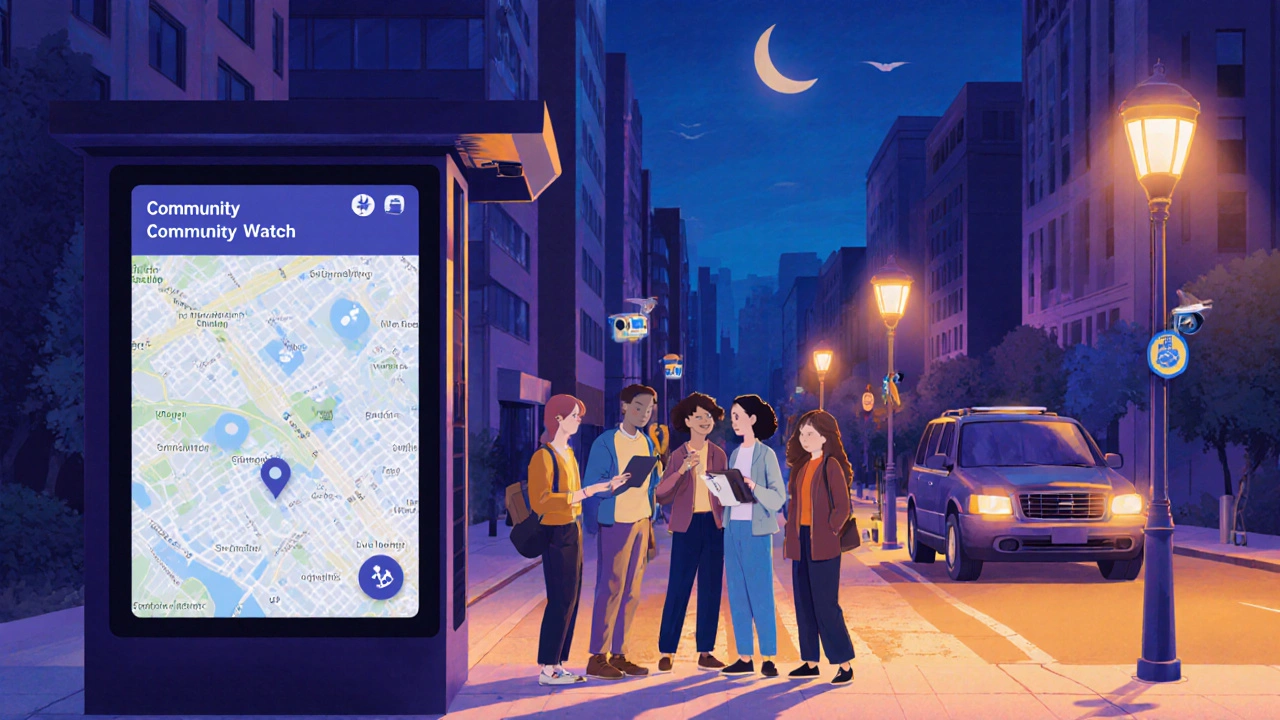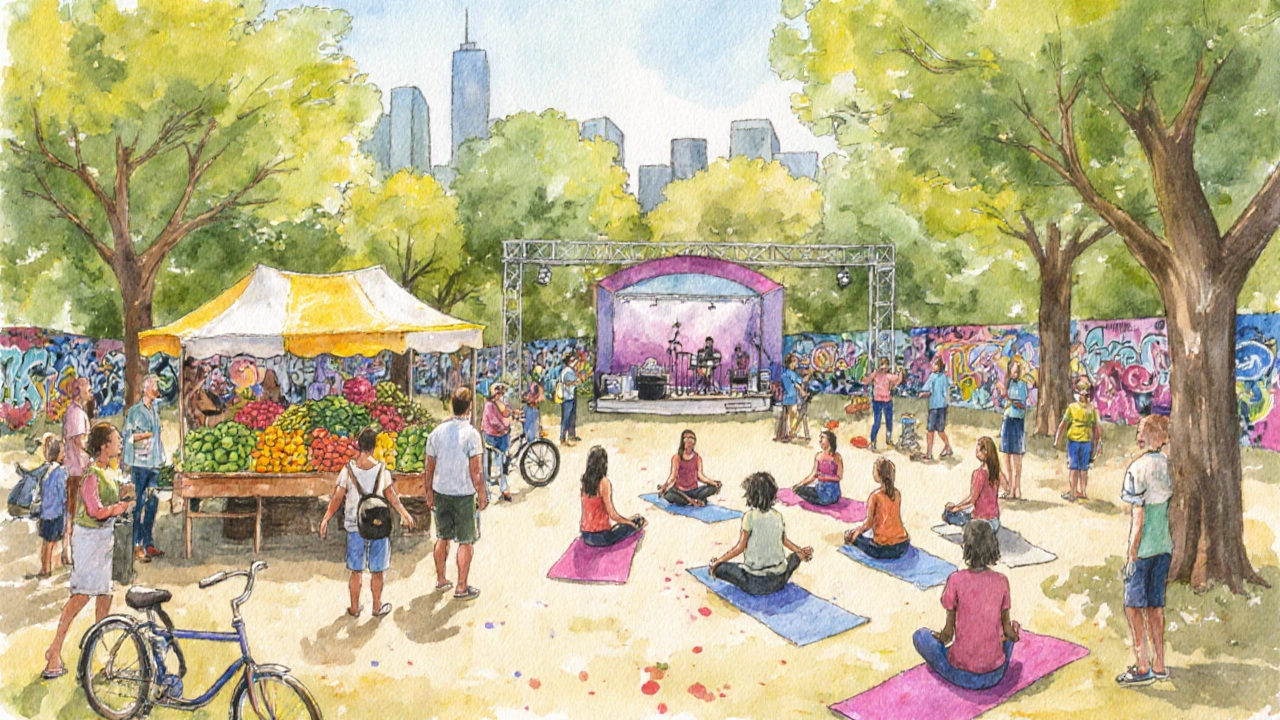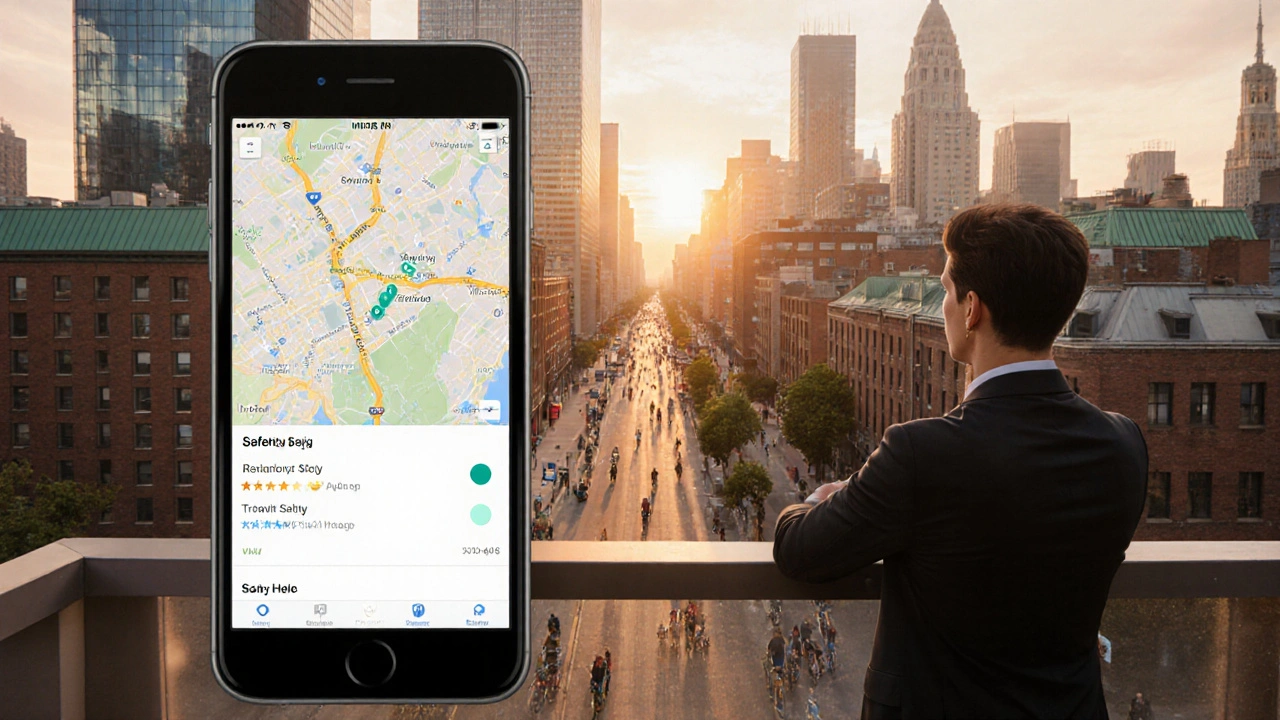City Housing Affordability Calculator
Calculate Your Housing Budget
The article mentions that a healthy rent-to-income ratio is 30% in many affordable cities. Enter your numbers below to see if you're within the recommended range.
Affordability Results
Enter your income and desired rent to see if you're within the recommended 30% rent-to-income ratio for affordable urban living.
Key Takeaways
- Most city fears are based on outdated stereotypes, not current data.
- Urban safety has improved thanks to technology and community policing.
- Public transit, job hubs, and cultural spots make city living convenient and enriching.
- Strong neighborhood networks and mental‑health resources help newcomers feel at home.
- Simple habits-like using apps, exploring on foot, and joining local groups-turn anxiety into confidence.
Thinking about moving to a big city but feeling nervous? You’re not alone. Many people grow up hearing stories about crime, traffic jams, and sky‑high rents, and they assume city life is a daily battlefield. The good news is that most of those worries are either exaggerated or solvable with a few smart moves. Below we break down the real picture, back it up with recent stats, and hand you a toolbox of tips so you can enjoy city living without the dread.
Big city life is a dense urban environment that combines residential, commercial, and cultural spaces in close proximity. It offers a speed and variety that smaller towns simply can’t match. While the noise and crowds can feel overwhelming at first, the benefits often outweigh the perceived risks.
1. What People Fear Most (And Why It’s Usually Overblown)
Here are the top five worries you’ll hear, paired with the facts that put them in perspective.
| Myth | Reality (2024 Data) |
|---|---|
| Crime rates are skyrocketing everywhere. | According to the National Crime Database, overall violent crime in major U.S. metros dropped 12% from 2020‑2024. |
| Rent is unaffordable for anyone. | While rents are higher, the average rent‑to‑income ratio in 2024 fell to 30% in cities like Austin and Denver, thanks to new housing incentives. |
| Traffic means you’ll waste hours each day. | Public transit ridership rose 18% in 2023, and the average commute time in top‑ranked transit cities is under 35 minutes. |
| Everyone is anonymous and unfriendly. | Neighborhood apps report a 45% increase in local meet‑ups and volunteer events since 2022. |
| Mental health suffers in the hustle. | City‑based counseling services expanded by 22% in 2024, and user satisfaction scores hit 8.4/10. |
2. Safety Gets a Tech Boost
Urban safety is a combination of policing, community programs, and technology that reduces crime and increases public confidence. Today’s cities deploy hundreds of surveillance cameras, real‑time crime‑mapping apps, and predictive policing algorithms that target hot spots before they become problems.
- Neighborhood watch groups now coordinate through apps like Nextdoor, posting alerts within seconds.
- Ride‑share safety features let passengers share live locations with trusted contacts.
- Smart streetlights adjust brightness based on pedestrian traffic, cutting down on accidents after dark.
Result? Residents in top‑ranking safety cities report feeling safer at night than they did in their suburbs.

3. Getting Around: Public Transportation That Works
Public transportation is a network of buses, subways, light rail, and bike‑share programs that moves millions daily. Modern systems focus on speed, coverage, and affordability.
- Contactless fare cards speed boarding by 25%.
- Integrated apps show real‑time arrivals, route alternatives, and crowd levels.
- Bike‑share docks now double as charging stations for e‑bikes, extending range for commuters.
If you’re worried about traffic, consider the door‑to‑door time: a well‑planned subway ride plus a short bike‑share leg often beats a 30‑minute car drive in congested areas.
4. Housing: Finding a Spot That Fits Your Budget
Housing market is a dynamic mix of apartments, condos, co‑living spaces, and micro‑units that cater to diverse income levels. While rent heads stay high in core downtowns, emerging neighborhoods and satellite districts offer more affordable options.
- Research big city life micro‑unit trends-many buildings now offer 300‑sq‑ft studios with shared amenities for 30‑40% less than a traditional one‑bedroom.
- Leverage rent‑control zones-cities like Portland and New York have phased‑in caps that protect long‑term tenants.
- Consider co‑living communities-these provide private rooms plus communal kitchens, cutting costs while building instant social bonds.
Pro tip: Use platforms like PadMapper that filter listings by commute time, not just price, so you can find a spot that minimizes travel stress.
5. Jobs & Careers: The Urban Advantage
Job opportunities are a concentration of diverse industries, networking events, and start‑up ecosystems that accelerate career growth. In 2024, metropolitan areas accounted for 68% of all tech and creative job openings.
- Co‑working spaces host weekly “speed‑networking” sessions that connect freelancers with recruiters.
- City incubators provide grants, mentorship, and office space at reduced rates for early‑stage founders.
- Industry‑specific meet‑ups (e.g., fintech, sustainable design) happen almost daily, turning casual chats into job leads.
Even if you’re not in a high‑tech field, retail, healthcare, and education sectors thrive in dense populations, offering stable employment with room for advancement.
6. Community & Belonging: You’re Not Alone
Community networks are a web of neighborhood groups, hobby clubs, and online forums that foster connection among residents. The myth of the “anonymous city” fades once you tap into these resources.
- Local Facebook groups often organize block parties, garden swaps, and language cafés.
- Volunteer programs like “City Clean‑Up” meet‑up on weekends and instantly place you among like‑minded locals.
- Libraries now host free workshops on everything from résumé writing to pottery, creating low‑pressure social settings.
Start small: sign up for a weekly farmers‑market crew or a weekend walking tour. Within a month you’ll recognize familiar faces and feel a sense of ownership over your neighborhood.

7. Culture, Entertainment, and Lifestyle Perks
Cultural amenities include theaters, museums, live‑music venues, parks, and restaurants that enrich daily life. Access to art, cuisine, and green space boosts both happiness and creativity.
- Most cities now offer “culture passes” that give unlimited museum entry for a flat monthly fee.
- Pop‑up food markets showcase global flavors, letting you sample new dishes without traveling far.
- Urban parks are expanding-2023 saw a 15% increase in green acreage across major metros, providing quiet spots for exercise and relaxation.
When you think about city life, picture a Saturday afternoon strolling through a street‑art festival rather than a stressful rush hour.
8. Mental Health Support: You’re Covered
Mental health resources are a network of clinics, hotlines, community groups, and digital therapy platforms that address stress, anxiety, and depression. Cities invest heavily in these services because they understand the fast‑pace can wear people down.
- Sliding‑scale counseling centers offer sessions starting at $30 per hour.
- Tele‑therapy apps partner with city health departments for free trials.
- Mindfulness workshops in parks are often free, led by certified instructors.
Make it a habit: schedule a weekly check‑in-whether with a therapist, a trusted friend, or a meditation group-to keep stress in check.
Putting It All Together: A Simple Checklist for the First 30 Days
- Choose a safe neighborhood using crime‑map tools; note nearby transit stops.
- Secure housing that fits your budget-consider micro‑units or co‑living.
- Register for a transit pass and download the city’s real‑time travel app.
- Join at least one community group (e.g., sports league, hobby club).
- Explore one cultural venue each week-museum, street fair, or live music spot.
- Set up a mental‑health routine: a therapy session, a yoga class, or a daily walk in the park.
Follow this roadmap, and you’ll find the city’s rhythm faster than you expected.
Frequently Asked Questions
Is crime really lower in big cities than in suburbs?
Yes. National data shows a steady decline in violent crime across the 20 largest U.S. metros from 2020 to 2024, thanks to better policing technology and community initiatives.
How can I keep transportation costs low?
Pick up a multi‑day or monthly transit pass, use bike‑share for short hops, and plan routes with apps that highlight free‑fare zones or off‑peak discounts.
What’s the best way to meet new people?
Start with low‑commitment gatherings-farmers‑market volunteer crews, local fitness classes, or neighborhood book clubs. Consistency builds familiarity quickly.
Are there affordable housing options in major cities?
Absolutely. Look for micro‑units, rent‑controlled districts, and co‑living arrangements. Many cities offer subsidies for first‑time renters and low‑income households.
How do I stay safe while exploring new neighborhoods at night?
Use a trusted navigation app with live‑location sharing, stick to well‑lit streets, and keep a short list of nearby open businesses. Many cities also have 24‑hour public transit hubs that serve as safe meeting points.
What mental‑health resources are most effective for newcomers?
Sliding‑scale counseling centers, community‑run mindfulness workshops, and city‑partnered tele‑therapy platforms provide affordable, flexible support. Many universities also run free counseling clinics open to the public.

